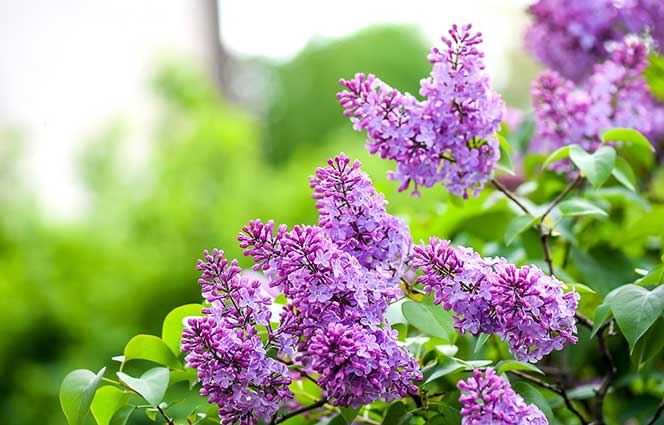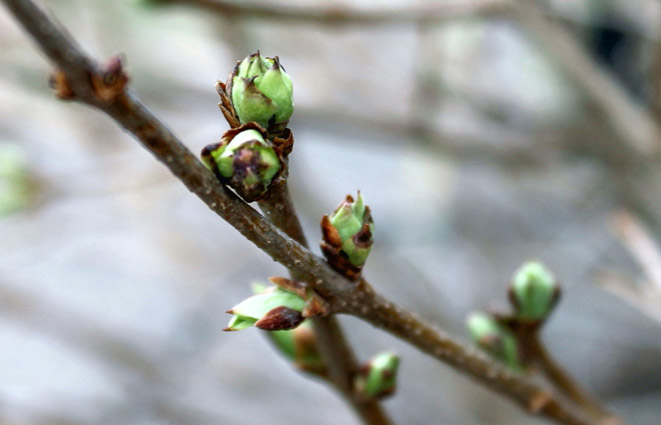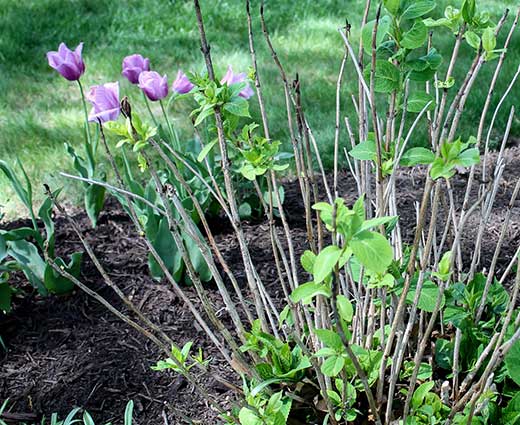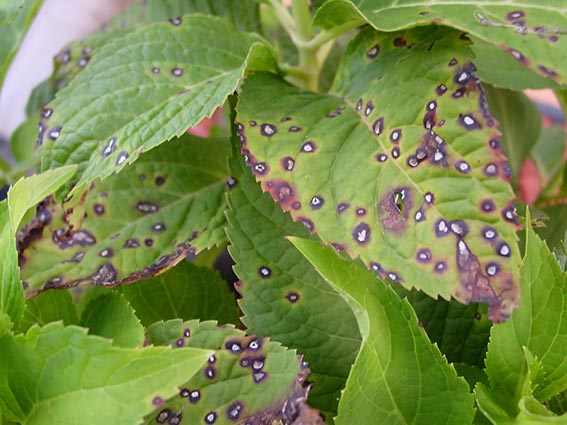Confused Plants: Why Are They Blooming Again?
Plants that commonly only bloom in the spring may also bloom in the fall. While not always normal, it’s okay and won’t harm the plant. Enjoy the show.

The correct time to prune lilacs is immediately after they've finished flowering
It’s one of gardening’s most frustrating mysteries – the shrub that was blooming beautifully when you bought it, hasn’t bloomed since. But don’t lose heart, the “non-bloom” of shrubs happens for a variety of reasons, most of which are fixable. Some types, such as hydrangeas, lilacs, azaleas, mock oranges (Philadelphus), wisterias, and trumpet vines (Campsis) are affected more so than others. A little plant-detective work usually zeroes in on the culprit.
While some shrubs start blooming when they’re only a year or two old, others need more maturity before they move into this opening act of reproduction. Wisterias, trumpet vines, climbing hydrangeas (Hydrangea anomala ssp.petiolaris), and lilacs are notorious for needing at least three or four years to bloom for the first time – and sometimes as many as six or seven years. The solution is patience. You can’t hurry Mother Nature.
Conversely, many shrubs flower best on young branches and go downhill or stop blooming altogether as the branches age. Lilacs, mock oranges, and rhododendrons are three examples.
The solution is to remove about one third of the oldest growth each year, and allow new shoots to replace the removed ones. That ensures a steady supply of prime-blooming young growth. In chronic cases of old age, non-bloomers can be brought back to life by “rejuvenation pruning” which involves whacking the whole plant back to within a few inches of the ground. This rather drastic action may result in a year or two of regrowth with only sparse bloom, before it regains its cycle on fresh wood.

These unopened flower buds on a lilac developed the previous fall. If they’re damaged or cut off, the plant won’t bloom. George Weigel
Spring-flowering shrubs form their flower buds right after blooming, in the previous summer and fall. Then they spend winter dormant before putting out flowers when spring arrives. If you prune these shrubs at the end of the season or any time over winter to early spring bloom time, you’ll cut off the buds that would have become flowers. The correct time to prune spring-flowering shrubs is immediately after they’ve finished flowering. This large group includes azaleas, beautybushes (Kolkwitzia), camellias, daphnes (Daphne), deutzias(Deutzia), dogwoods (Cornus), red vein enkianthus (Enkianthus), flowering almonds (Prunus glandulosa, P. triloba), forsythias, heaths (Erica), Japanese rose (Kerria), lilacs, Chinese fringe flowers (Loropetalum), magnolias, mock oranges, mountain laurels (Kalmia), ninebarks (Physocarpus), andromedas (Pieris), rhododendrons and azaleas, spicebushes (Lindera), spireas (Spiraea), sweetshrubs (Calycanthus), viburnums, weigelas, witch hazels (Hamamelis), wisterias, and May or June-blooming florists or mophead hydrangeas (H. macrophylla), mountain hydrangea(H serrata), oakleaf hydrangea (H. quercifolia), and climbing hydrangea.

The sparse leafing on this hydrangea indicates that cold killed a lot of buds and branches over winter, resulting in the plant not blooming as well as usual. George Weigel
Flower buds that form the previous fall, i.e. on “old wood,” also are susceptible to winter cold. Unusually cold temperatures often kill or blast the flower buds. Or an early spring warm-up can induce the flower buds to start opening prematurely, before a sudden temperature nosedive kills them, even at temperatures the buds would have survived when fully dormant. This affects plants only for that single season. If temperatures return to normal the following year, the plant will bloom again on schedule.
Plants grow best – including blooming – when they’re planted in a spot that satisfies their genetic needs. Some plants, such as spicebushes, are adapted to shady woodlands, while others like lilacs prefer the full sun of an open meadow. Check the label at the nursery or garden center. If you choose wrong, the sun-lover that you planted in the shade may never bloom, or only do so sparsely, because it’s not getting enough light to trigger flower bud production. On the other hand, that woodland shrub you planted in the middle of the front yard may be so stressed from the intense light and heat that it struggles to live, much less spend energy on flower production.
The solution is to do enough homework ahead of time to get the right plants in the right spot. Second best is to move struggling plants to a better location as soon as you realize they’re not “happy.” Sometimes, just a few more hours of sunlight around the corner is enough to make a big blooming difference.
A tricky sidelight is what happens when the surrounding landscape changes or grows. That lilac that used to bloom so well in full sun might not bloom much anymore because, over time, nearby trees have grown enough to block full sun.
Moving a plant may help it perform better in the long run, but it may miss a beat and not bloom the first season after a transplant. Being dug up and moved causes not only root damage and disruption, it also causes shock. The plant may need another year or two to re-establish its root system enough to bloom again. Treat a moved plant like a brand new one, and keep the soil consistently damp, but not wet, to encourage new roots to push out and establish the plant.
A severe lack of nutrients can harm a plant’s ability to bloom. But it’s also possible to disrupt blooming by being “too nice” to plants and over-fertilizing them, especially with too much nitrogen. Nitrogen (the first number on the three-digit listings on fertilizer bags and bottles) is important for leaf growth. But too much of it can cause overly lush foliage at the expense of flowers. Sometime shrubs sited close to a well-fertilized lawn will show symptoms of overfeeding. If you’ve been regularly dumping nitrogen fertilizers on a non-blooming plant, hold off for a season or two. Get a soil test (available at your local Cooperative Extension Office) to make sure the soil’s key nutrients are in proper balance. Soil test kits are available at most garden centers and County Extension Offices, and they take away the guesswork and tell you exactly what your soil needs in what amount. Usually the agents are happy to assist with any translation or interpretation of the results that you may need.

Diseases, such as this fungal leaf spot on a hydrangea, can be severe enough to diminish the plant’s flowering ability. George Weigel
Transplanting and poor siting are just two examples of plant stresses that can affect bloom. Planting shrubs too deeply (the soil level after planting should be at just the same level as it was in the container), planting them in poor quality soil, and assaults from bugs, diseases, rodents, deer, air pollution, road salt, and other environmental problems are all factors that can limit flower production.
The solution is to monitor the plants for damage, and identify and correct what’s causing it. Leaf damage, poor leaf color, bark damage, and stunted growth are some of the clues to help you find an answer.